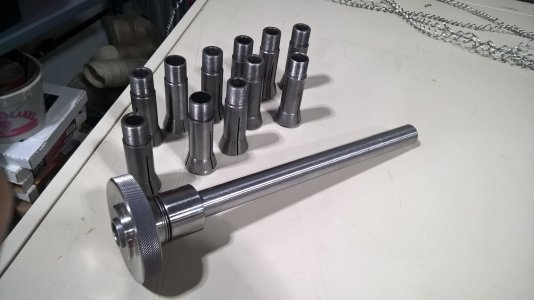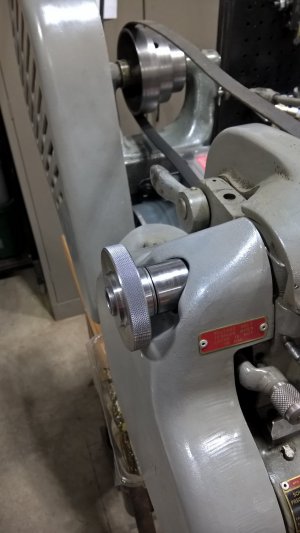Hi everyone,
I'm getting ready to attempt making a hand wheel style collet drawbar for the 6K collets. I have some with really nice threads on them and have the dimensions listed in the SB literature.
I know that they are 26 TPI and the major diameter is listed as .767". Also from looking closely it appears the thread angle is 55 degrees, not 60.
Does anyone know if SB used any kind of thread "standard" for the collets or was it a proprietary SB thread?
It appears that British Standard Brass (SBS) is really close for 3/4" with the major diameter is .750". Thread depth of SBS seems to be uniform at .0246" at any diameter.
I don't have any thread measuring wires so my plan is to make some test threads in some cheap pipe. I've ground an internal thread tool to 55 degrees and am ready to start testing but I don't have a starting ID for the bore. I'm thinking Major diameter minus 2X thread depth (.767-.0492 = .7178).
Am I missing anything here?
TIA,
Stuart
I'm getting ready to attempt making a hand wheel style collet drawbar for the 6K collets. I have some with really nice threads on them and have the dimensions listed in the SB literature.
I know that they are 26 TPI and the major diameter is listed as .767". Also from looking closely it appears the thread angle is 55 degrees, not 60.
Does anyone know if SB used any kind of thread "standard" for the collets or was it a proprietary SB thread?
It appears that British Standard Brass (SBS) is really close for 3/4" with the major diameter is .750". Thread depth of SBS seems to be uniform at .0246" at any diameter.
I don't have any thread measuring wires so my plan is to make some test threads in some cheap pipe. I've ground an internal thread tool to 55 degrees and am ready to start testing but I don't have a starting ID for the bore. I'm thinking Major diameter minus 2X thread depth (.767-.0492 = .7178).
Am I missing anything here?
TIA,
Stuart



